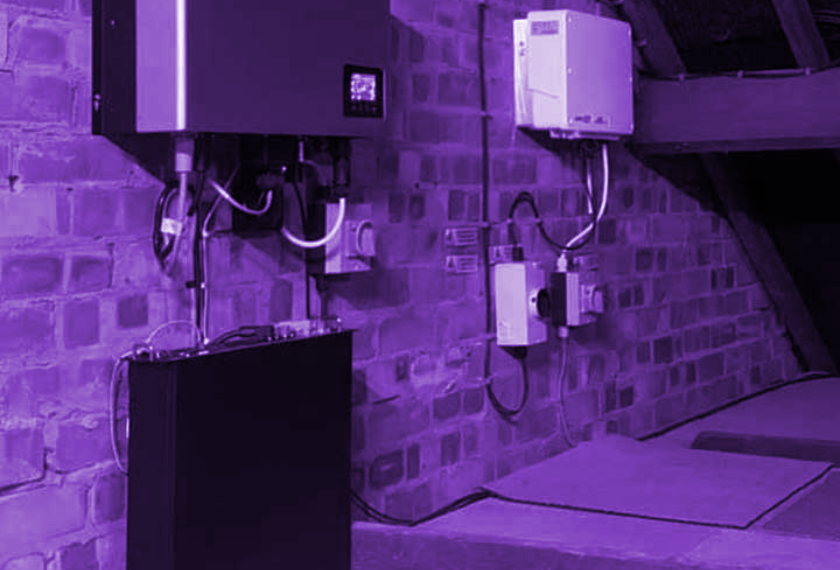
Powering Manchester’s Future: Saving more with Battery Storage Solar PV
Adding battery storage to your solar photovoltaic (PV) system can significantly enhance its utility and financial returns. But is it worth the extra investment, especially in a city like Manchester, where sunshine is scarce and energy markets are increasingly volatile? Let’s delve into the practicalities and economics of incorporating batteries into your PV system while considering the shocks that affect energy prices and market dynamics. Please first read the previous blog PV in Manchester for background understanding prior to this supplementary discussion.
Solar Alone Isn’t Enough. Why Batteries Are the Missing Piece
Battery storage offers several compelling benefits for homeowners with solar PV systems, their importance varies depending on each situation but I would like to think they are as following in descending levels of importance:
- Environmental Benefits
By storing and using your solar energy, you reduce reliance on fossil fuel-based grid power, further shrinking your carbon footprint. - Maximizing Solar Usage
Without a battery, any unused solar energy is exported to the grid, often at a lower rate than the cost of grid electricity. Batteries allow you to use a larger share of the energy your system generates, making your investment more efficient. - Mitigating Price Shocks
The energy market has experienced significant shocks due to geopolitical instability, supply chain disruptions, and increased demand. Batteries act as a buffer, enabling you to avoid high import costs during peak pricing periods. - Energy Independence
Batteries enable you to store excess energy generated during the day for use during peak hours or at night. This reduces your reliance on the grid and protects you from rising energy costs and outages. Given recent energy market shocks, including volatile wholesale electricity prices and geopolitical factors affecting supply, energy independence is more valuable than ever.
Energy independence and mitigating price shock are clearly linked and are global geopolitical discussion and personal preference. I will not be covering those in this discussion but will concentrate on the first two benefits.
How Solar Batteries Protect Our Environment
At first glance, adding a battery to a home solar array may seem environmentally negative. The energy generated by solar is typically fed into the grid, where it can be consumed by others. Installing a battery introduces additional embodied carbon, from production to transport, which may not be needed if the grid can handle excess energy. Moreover, mining for lithium, cobalt, and other materials raises environmental and ethical concerns due to questionable practices tied to resource extraction. If a home is generating enough energy, why store it when the grid can manage the surplus?
However, considering the broader impact on energy use is crucial, especially as we strive to decarbonise our systems. In the evening and night, when solar production halts, the grid often relies heavily on fossil fuels, leading to carbon-intensive energy generation. Storing solar energy in batteries enables homeowners to use clean energy when the grid is powered by less environmentally friendly sources, helping reduce reliance on fossil fuels and lowering emissions, particularly in areas with high fossil fuel dependence.
To fully understand the environmental impact, we must examine the entire energy system, including how batteries interact with grid demand, renewable energy adoption rates, and advances in battery production and recycling. While battery storage plays a crucial role in reducing dependence on non-renewable energy, its suitability for every homeowner requires careful analysis. As we move toward a more sustainable energy future, storage technologies like batteries will become increasingly important.
How Much Can You REALLY Save? A typical Manchester Terrace
We wrapped up the previous discussion on solar panels with the conclusion that maximising the own power usage was the key element of making the solar system as profitable as possible. This is due to the financial difference in the cost of a kWh purchased vs the value it is sold to the grid under currently policy. Given this conclusion it makes sense that we now unpick the difference a solar array with no battery and a lower own power comsuption and a battery enabled system with a significantly increased own power consumption. Please refer to the previous blog for details of the typical Manchester terrace case study.
A dual-pitch roof with a 22-degree angle, 196-degrees from due north which is 16 degree azimuth (from due south). These are fairly ideal conditions for the array, and we can fit 8 panels (16m2) on the 25m² roof. There is also no shading nor inefficiency dirt on the panels or degradation of the panel efficiency over time. This may be comparable to a larger terraced property. The panel we will install will be modern 440W panels.
The Solar system in this discussion is negligibly cheaper that the once discussed in the first blog. Since the previous blog I received quotes for the work to be completed, down to £5876 from £6013. The annual generation estimate increased from 2946kWh to 3223kWh, this can be attributed to slight different hardware. The quote for the array with the addition battery system is £9326. The percentage of estimated own power consumption was estimated by the contractor who provided a quote.
| Solar system | Cost of components (£) Excluding VAT | Own energy consumption (%) | Source |
| 8 panel system including installation | 5876 | 32 | Supply and install quote |
| 8 panel system with 9.6kWh master and slave battery system. | 9326 | 75 | Supply and install quote |
As previously we can estimate 10p export price and 25p import cost. The annual valuation of electricity generated in each case is as follows:
No battery: (3,223kWh x 0.25p/kWh x 32%) + (3,223kWh x 0.10p/kWh x 68%) = £477
With battery: (3,223kWh x 0.25p/kWh x 75%) + (3,223kWh x 0.10p/kWh x 25%) = £685
As we did in the previous blog we consider the net present value of each scenario given the 25 years of the solar panel’s life generating energy. With 3 degrees of discount rate. (4,2 and 0%). This method has 3 distinct pros.
- Realistic and widely accepted in financial modelling.
- Allows for comparison with other investment opportunities.
- Captures the impact of long-term opportunity costs
NPV=∑ Ct÷(1+r)t
Where:
- Ct is the cash inflow in year t (savings from solar energy).
- r is the discount rate (4% or 0.04). Typically used in financial prediction and considers such things as, risk, economic climate and desired return on investment.
- t is the year number (from 0 to 24).
- The formula sums the discounted cash inflows for each year from year 1 to year 25.
Considering a 2% discount rate as we have previously, the best-case scenario is clear. A NPV (Net Present Value) of £13,639 with the battery compared to £9,499 without battery. However, the battery option does not look preferable when considering the ROI (Return on Investment) and the payback period or BEP (Break Even Point).
ROI for Manchester homeowners

ROI= Annual saving ÷ Initial Cost ×100
The average annual saving is the NPV divided by the years in operation of the solar array.

Under all three economic variations, the battery-based system proves to be a better total economic investment regarding NPV. Although adding a battery shifts all scenarios closer to A from the previous blog, i.e., maximizing home usage, the additional cost is detrimental to the BEP (break even point) and ROI . It can also be assumed that the battery system will not have the same lifespan as the solar array itself. This means that without proper calculations and the need to reinvest in batteries after 10-12 years, the ROI would further diminish.
Real Results: The Truth About Batteries in Manchester
In conclusion, adding a battery to this solar system in Manchester can significantly enhance your energy independence, protect against market shocks, and reduce your carbon footprint, but it does not improve financial returns. However, other benefits may persuade adoption, especially if the money was not going to be invested elsewhere. The Eco Experts have come to a markedly similar conclusion.
There may be a two more option to consider: an energy management system (EMS) without the need for a battery. Typically, cheaper than a battery storage system, an EMS can optimise energy use by directing surplus energy to energy-intensive activities, such as activating appliances during periods of excess generation or diverting energy to a hot water tank. However, this solution would require investigation and could only be feasible if the property is equipped with sustainably smart appliances and a compatible hot water tank. Starting to incorporate the purchase of these additional items may reduce the overall economic benefit, making it less financially sensible compared to other options.
Secondly changing your energy provided to benefit more from The Smart Export Guarantee which allows you to still benefit from that excess electricity, in the form of payments from an energy supplier participating in the scheme. Peak times of course generate the largest value per kWh, however you can still get rates up to 20p per kWh by some energy companies. If you’re willing to venture down this route, Resolve can compare Import and Export tariffs from different suppliers in our analysis. In most cases where homeowners want to use their energy at peak time and not sell it, this export price premium will provide weighted benefit to the system without a battery.
Struggling With Solar and battery? Let Resolve Find Your Perfect Solution
I am confident that this is a sound assessment of the case study; however, it must always be remembered that energy consumption patterns, financing options, the long-term plans of the homeowner, and government energy policy and pricing are all subject to fluctuation. Resolve Sustainability Consulting has the tools to unlock the potential of your project. Whether you are considering a back-to-brick renovation or exploring additional ways to reduce your carbon footprint and lower bills. Whether you are based in Greater Manchester or further afield. We can provide a comprehensive analysis and detailed documentation to make the decision-making process more manageable.

